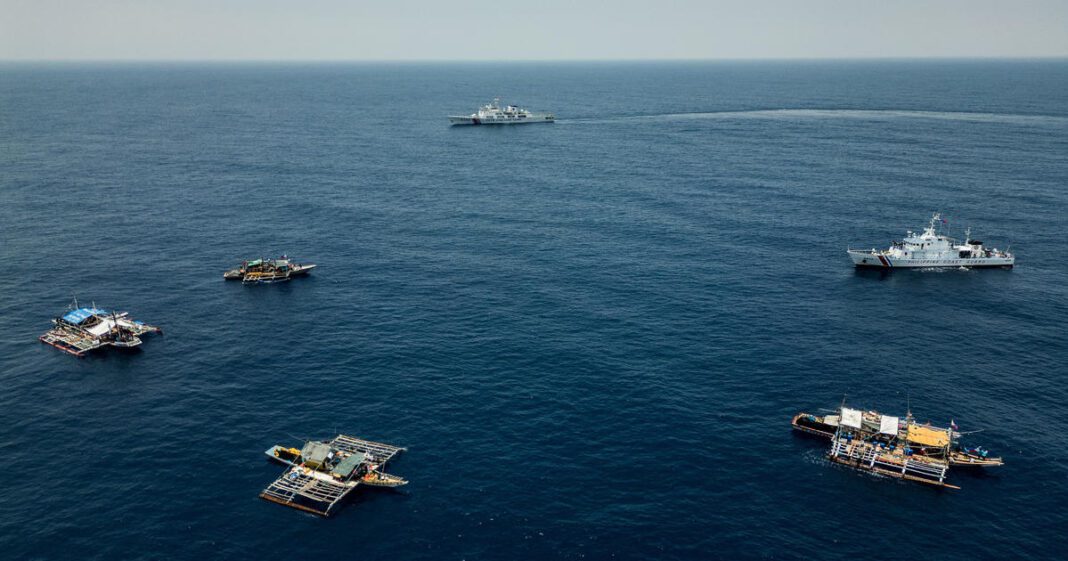Securing Maritime Interests with Advanced Defense Systems
The Philippines has announced its plan to acquire the U.S.-made Typhon missile system as part of its effort to safeguard its maritime interests. This decision comes after the deployment of the mid-range missile system in the northern Philippines earlier this year for joint military exercises with the United States. The system’s presence in the region has already caused significant tensions, with China voicing strong opposition.
The Typhon missile system was introduced during joint military exercises between the Philippines and the United States, which have long been allies. Although initially planned as a temporary deployment, the system was left in the Philippines after the exercises, sparking criticism from Beijing. The Chinese government has accused the deployment of destabilizing the region and increasing the risk of an arms race in Southeast Asia.
According to Philippine defense officials, the Typhon missile system aligns with the country’s concept of archipelagic defense. The system’s capabilities allow it to enhance the protection of the nation’s maritime boundaries, which extend up to 200 nautical miles under the United Nations Convention on the Law of the Sea. Officials emphasized that the missile system would play a crucial role in safeguarding the nation’s sovereignty, particularly in light of ongoing disputes in the South China Sea.
The Typhon Missile’s Strategic Importance
The U.S.-developed Typhon missile launcher, built by Lockheed Martin, is a land-based system with a range of 300 miles. The Philippine military has highlighted its potential to “project force” over significant distances, ensuring the protection of naval and coast guard assets within the country’s maritime entitlements. The system’s advanced technology allows it to target threats far beyond the reach of traditional defense systems.
The South China Sea, a critical global shipping route, has long been a contentious area. Despite an international ruling invalidating China’s sweeping claims over the region, disputes have persisted. The Philippines’ efforts to strengthen its defense capabilities come amid escalating confrontations between its navy and coast guard forces and Chinese vessels over contested waters and reefs.
The United States has reiterated its commitment to defending its ally, stating that freedom of navigation in the South China Sea is a core national interest. Although the U.S. does not claim territory in the region, it has maintained a strong presence to support allies like the Philippines in resisting territorial encroachments.
Regional Reactions and Rising Tensions
China’s response to the announcement has been swift and critical. The Chinese government condemned the decision to acquire the Typhon missile system, describing it as a “provocative and dangerous move.” Chinese officials warned that the acquisition could lead to an arms race, undermining peace and stability in the region. They urged the Philippines to reconsider its actions, emphasizing the need for dialogue and cooperation rather than confrontation.
Despite the criticism, Philippine defense officials have defended the decision, asserting that the missile system is solely for national defense. They dismissed concerns about regional destabilization, emphasizing that the acquisition aligns with the country’s sovereign interests and does not aim to provoke any other nation.
The Typhon missile system is not expected to be fully acquired and operational in the Philippines for several years. Military officials noted that the acquisition process is lengthy and complex, often taking years from planning to delivery. For example, the delivery of the BrahMos cruise missile system, another recent defense acquisition, took five years to complete.
As tensions in the South China Sea continue, the Philippines’ decision to strengthen its defense capabilities highlights the ongoing challenges of maintaining sovereignty and security in a geopolitically sensitive region. The deployment of advanced systems like the Typhon missile reflects the country’s commitment to protecting its maritime interests and ensuring the safety of its naval and coast guard assets. At the same time, the move underscores the delicate balance between national defense and regional diplomacy in Southeast Asia.

